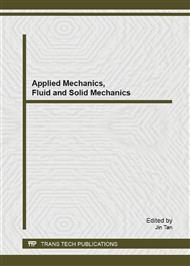p.69
p.77
p.83
p.89
p.95
p.101
p.107
p.115
p.119
Simulation of the Influence of Air Preheat Combustion on the Temperature of Propane Turbulent Flame Using Probability Density Function Approach and Eddy Dissipation Model
Abstract:
This paper presents results obtained from the application of a computational fluid dynamics (CFD) code Fluent 6.3 to modelling of temperature in propane flames with air preheat. The study focuses on investigating the effect of air preheat temperature on the temperature of the flame. A standard k-ε turbulence model in combination with the Probability Density Function (PDF) model for Non Premix Combustion model and Eddy Dissipation Model (EDM) are utilized to represent the flow and temperature fields of the flame being investigated, respectively. The results of calculations are compared with experimental data of propane flame taken from literature. The results of the study showed that the combination of the standard k-ε turbulence model and PDF model is more capable of producing reasonable predictions of temperature, particularly in axial profile and rich fuel area of all two flames compared with those of EDM model. Both experimental works and numerical simulation showed that increasing the temperature of the combustion air significantly increases the flame temperature.
Info:
Periodical:
Pages:
95-100
Citation:
Online since:
December 2013
Authors:
Keywords:
Price:
Сopyright:
© 2014 Trans Tech Publications Ltd. All Rights Reserved
Share:
Citation:


